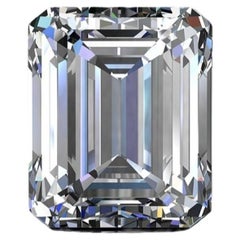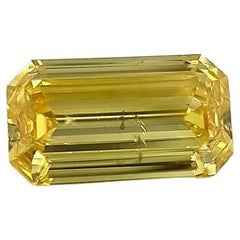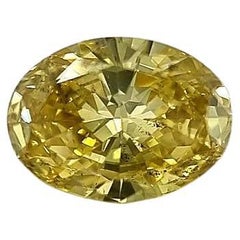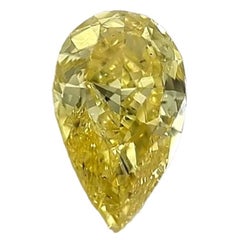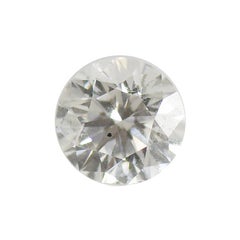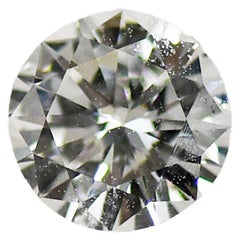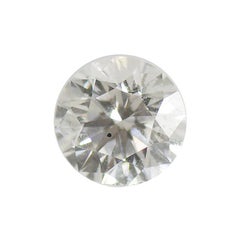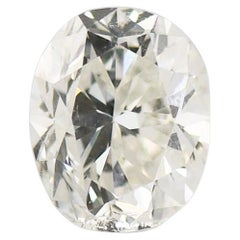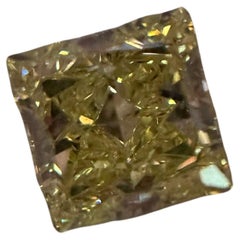Gia Certified Loose Diamonds
2010s American Modern Loose Gemstones
Diamond
2010s Sierra Leonean Modern Loose Gemstones
Diamond
2010s Sierra Leonean Modern Loose Gemstones
Diamond
2010s Sierra Leonean Modern Loose Gemstones
Diamond
Late 20th Century Loose Gemstones
Diamond
Late 20th Century Loose Gemstones
Diamond
Late 20th Century Loose Gemstones
Diamond
Mid-20th Century Loose Gemstones
Diamond
21st Century and Contemporary Loose Gemstones
Yellow Diamond
2010s American Loose Gemstones
Diamond
2010s American Loose Gemstones
Diamond
2010s American Loose Gemstones
Diamond
2010s Loose Gemstones
Diamond, Emerald
2010s Loose Gemstones
Diamond
2010s American Loose Gemstones
Diamond
2010s North American Loose Gemstones
Diamond
2010s American Loose Gemstones
Diamond
2010s American Loose Gemstones
Diamond
2010s American Loose Gemstones
Diamond
2010s American Loose Gemstones
Diamond
2010s Loose Gemstones
Diamond
Late 20th Century Loose Gemstones
Diamond
2010s American Loose Gemstones
Diamond
21st Century and Contemporary American Loose Gemstones
Diamond
21st Century and Contemporary Loose Gemstones
Diamond
Late 20th Century Loose Gemstones
Diamond
Late 20th Century Loose Gemstones
Diamond
Late 20th Century Loose Gemstones
Diamond
Mid-20th Century Loose Gemstones
Diamond
21st Century and Contemporary Loose Gemstones
Pink Diamond
Antique 15th Century and Earlier Loose Gemstones
White Diamond
Antique 15th Century and Earlier Loose Gemstones
White Diamond
21st Century and Contemporary Loose Gemstones
Diamond
21st Century and Contemporary Loose Gemstones
Diamond, Pink Diamond
21st Century and Contemporary American Loose Gemstones
Diamond
2010s American Loose Gemstones
Diamond
2010s American Loose Gemstones
Diamond
2010s American Loose Gemstones
Diamond
2010s American Loose Gemstones
Diamond
21st Century and Contemporary Retro Loose Gemstones
Diamond
21st Century and Contemporary Loose Gemstones
Diamond, White Diamond, Blue Diamond
21st Century and Contemporary American Modern Loose Gemstones
Diamond
21st Century and Contemporary American Modern Loose Gemstones
Diamond
21st Century and Contemporary American Modern Loose Gemstones
Diamond
21st Century and Contemporary American Modern Loose Gemstones
Diamond
21st Century and Contemporary American Modern Loose Gemstones
Diamond
21st Century and Contemporary American Modern Loose Gemstones
Diamond
21st Century and Contemporary American Modern Loose Gemstones
Diamond
21st Century and Contemporary Loose Gemstones
Pink Diamond
21st Century and Contemporary American Modern Loose Gemstones
Diamond
21st Century and Contemporary Modern Loose Gemstones
Diamond
2010s Italian Modern Loose Gemstones
Diamond
Antique 15th Century and Earlier Loose Gemstones
Brown Diamond
Antique 15th Century and Earlier Loose Gemstones
White Diamond
21st Century and Contemporary Loose Gemstones
Diamond
2010s American Loose Gemstones
Diamond
21st Century and Contemporary American Modern Loose Gemstones
Diamond
21st Century and Contemporary American Modern Loose Gemstones
Diamond
21st Century and Contemporary Loose Gemstones
Diamond, White Diamond, Yellow Diamond
21st Century and Contemporary American Modern Loose Gemstones
Diamond
- 1
- ...
Gia Certified Loose Diamonds For Sale on 1stDibs
How Much are Gia Certified Loose Diamonds?
The Legacy of Diamond in Jewelry Design
Antique diamond rings, diamond tiaras and dazzling vintage diamond earrings are on the wish lists of every lover of fine jewelry. And diamonds and diamond jewelry are primarily associated with storybook engagements and red-carpet grand entrances — indeed, this ultra-cherished gemstone has a dramatic history on its hands.
From “A Diamond Is Forever” to “Diamonds Are a Girl’s Best Friend,” pop culture has ingrained in our minds that diamonds are the most desired, the most lasting and the most valuable gemstone. But what makes the diamond so special? Each stone — whether it’s rubies, sapphires or another stone — is unique and important in its own right. April babies might claim diamonds for themselves, but just about everyone wants this kind of sparkle in their lives!
There are several factors that set diamonds apart from other stones, and these points are important to our gem education.
Diamonds are minerals. They are made up of almost entirely of carbon (carbon comprises 99.95 percent; the remainder consists of various trace elements). Diamonds are the hardest gemstones, ranking number 10 on the Mohs Hardness Scale. Even its name, diamond, is rooted in the Greek adamas, or unconquerable. The only object that can scratch a diamond is another diamond. Diamonds are formed deep within the earth at very high temperatures (1,652–2,372 degrees Fahrenheit at depths between 90 and 120 miles beneath the earth’s surface) and are carried up by volcanic activity. Diamonds are quite rare, according to the Gemological Institute of America, and only 30 percent of all the diamonds mined in the world are gem quality.
In the 1950s, the Gemological Institute of America developed the 4Cs grading system to classify diamonds: clarity, color, cut and carat weight. Not all diamonds are created equal (there are diamonds, and then there are diamonds). The value of the diamond depends on the clarity (flawless diamonds are very rare but a diamond's value decreases if there are many blemishes or inclusions), color (the less color the higher the grade), cut (how the diamond’s facets catch the light, certain cuts of diamonds show off the stone better than others) and carat weight (the bigger, the better).
When you start shopping for a diamond engagement ring, always prioritize the cut, which plays the largest role in the diamond's beauty (taking the time to clean your diamond ring at least every six months or so plays a role in maintaining said beauty). And on 1stDibs, a range of buying guides can be found for those in the market for antique engagement rings, vintage engagement rings or Art Deco engagement rings.
Shop antique and vintage diamond rings, diamond necklaces and other extraordinary diamond jewelry on 1stDibs.
Finding the Right Loose Gemstones for You
Are you shopping for diamonds and other loose gemstones to create your own custom jewelry?
Why might you purchase a diamond or gemstone “loose” — that is, on its own, not mounted in a piece of jewelry? Perhaps you’re a connoisseur looking to acquire a unique investment. The scarcity of high-quality colored diamonds, for instance, especially pink diamonds, means that their value increases over time; the same is true of rare Kashmir sapphires and Burmese rubies. Far rarer than diamonds, Paraiba tourmaline, discovered only in the 1980s, is treasured as much for its extraordinary color as its scarcity, both of which contribute to its high value.
A more common scenario would be that you’re hoping to create a very special piece of custom jewelry, such as an engagement ring or a milestone-birthday present, and want to personally select the most beautiful, unusual, or ultra-rare stone you can find and afford. Doing so adds to the romance and substance of the gift and can be a part of the story told as the jewel is passed from generation to generation.
If this sounds like you, read on for tips on becoming one of the world’s savviest gem hunters.
Educate yourself: When buying any piece of gem-set fine jewelry, you should familiarize yourself with the factors that determine a stone’s price. This will enable you to streamline your search for the perfect gem and have intelligent, productive conversations with sellers.
There is a wealth of information online, such as our diamond-buying guide and this overview of colored gemstones for engagement rings. The buying guides of the Gemological Institute of America (GIA), searchable by stone type, are also a widely trusted source for consumers venturing into the world of diamonds and gems for the first time.
Vet your vendor: If you peruse 1stDibs with any regularity, you know there is no shortage of vendors who deal in top-quality loose gemstones. (Read about our vetted sellers.) Finding a trustworthy, established dealer may be as easy as getting a recommendation from friends or family. And, although it may sound obvious, it pays to Google your candidates — and consult customer reviews — before making contact.
Harakh Mehta, designer and founder of the Mumbai, India–based fine-jewelry brand Harakh, has an innate understanding of proper client relations, especially when the customer is in unfamiliar territory. “Start chatting with the dealer, get to know them better," he says. "It’s very important to establish a comfort level. We never push a sale, as we want it to be a carefully considered purchase. So, if the client is not in a rush, we do it over a few virtual meetings or phone calls.”
Request documentation: The best dealers go to great lengths to furnish clients with documents verifying the quality rating, natural origin and provenance of a stone — showing, for example, that loose emerald hails from the famous Muzo mine in Colombia — and disclosing any treatments applied to enhance its appearance. (And who doesn't love emerald jewelry? The most valuable emeralds are the ones that have a deep bluish-green to true green color and no visible inclusions.)
If no grading report is available for a stone you are interested in, the dealer should be able to provide an authenticity document, such as an appraisal or info sheet, that has been signed by an in-house gemologist or professional appraiser. Google those names, too, for extra peace of mind.
Ask for videos and visuals: When transacting with a gem dealer online, you should always request real-time videos and photographs, since professional photos of a stone, usually on a white background, have likely been retouched for optimal presentation.
Read more about how to buy loose gemstones and find your dream gems today on 1stDibs.
- 1stDibs ExpertAugust 17, 2021In the United States, diamond rings are certified by an official gemological laboratory known as the Gemological Institute of America. A certified diamond ring means that the diamond has undergone a quality analysis by experts at an institution such as the GIA and these experts have issued a lab report that is indicative of the grading process.
- 1stDibs ExpertApril 5, 2022Yes, Cartier diamonds are indeed GIA certified. The Gemological Institute of America (GIA) works closely with Cartier and certifies everything from the cut and clarity to the color of the gem. Shop a collection of expertly vetted Cartier jewelry from some of the world’s top sellers on 1stDibs.
- 1stDibs ExpertFebruary 22, 2021When a diamond is GIA certified, it means that the stone has undergone the meticulous set of grading procedures that have been established by the Gemological Institute of America. The GIA is not a jeweler — it is an independent, nonprofit group that sets the standards for determining the quality of a diamond.
- 1stDibs ExpertMarch 22, 2022Whether Neil Lane diamonds are GIA-certified or not depends on the piece. All of the diamonds featured in rings and other jewelry designs from the Neil Lane Couture collection do carry GIA certification. Pieces made for third-party retailers may not. On 1stDibs, find a collection of Neil Lane jewelry.
- 1stDibs ExpertFebruary 13, 2023While diamond studs don't need to be GIA-certified to be sold, experts typically recommend that you only purchase diamonds that carry certification from the Gemological Institute of America (GIA) or Authentic Gem Security Lab (AGSL). Certifications bring transparency to the buying process, allowing you to know the level of quality of a diamond before you purchase it. Shop a collection of vintage and modern diamond gemstone earrings from some of the world’s top jewelers on 1stDibs.
- 1stDibs ExpertAugust 15, 2024Many experts believe that buying a GIA-certified diamond is worth it. The Gemological Institute of America (GIA) has a well-established reputation for providing accurate, trustworthy ratings and certifications. A diamond that carries a GIA certification has undergone rigorous examinations and tests to assess its quality, which can make it a good investment. Find a diverse assortment of diamond jewelry on 1stDibs.
